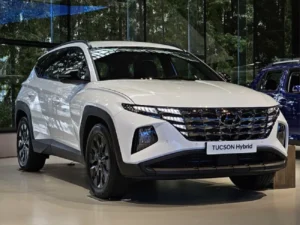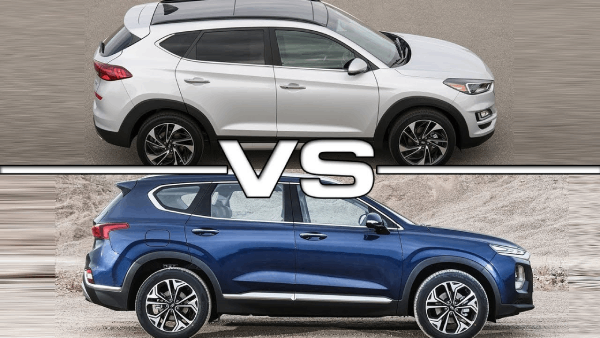Table of Contents
- Understanding Hyundai Tucson Trim Levels
- Hyundai Tucson Towing Capacity
- Leasing a Hyundai Tucson
- Supplies Needed for Towing:
- Final Thoughts
When exploring the Hyundai Tucson trim levels, it’s essential to consider the unique features and capabilities that each option offers, especially when it comes to towing capacity. The Hyundai Tucson provides an impressive balance of style, efficiency, and performance across its various trims, making it a versatile choice for many drivers. Whether you’re considering the SE, SEL, N Line, or the luxurious Limited, each trim level is designed to meet different needs and preferences. For those interested in Hyundai Tucson’s towing capacity, the SUV does not disappoint, offering sufficient power to handle your hauling needs, perfect for weekend adventures or small utility tasks. Additionally, leasing a Hyundai Tucson provides flexibility and access to cutting-edge technology and comfort without a long-term commitment. Understanding these aspects can help ensure you choose the perfect Tucson trim and leasing option that aligns with your lifestyle and budget requirements
The Hyundai Tucson is a versatile SUV that offers a range of trim levels to suit different needs and preferences. Whether you’re considering a Hyundai Tucson lease or simply want to understand the model’s capabilities, learning about the various trim levels is essential. This guide breaks down each trim level and provides you with the information needed to make an informed decision. We’ll also touch upon the Hyundai Tucson towing capacity for those interested in utility. Let’s dive in!
Understanding Hyundai Tucson Trim Levels
Before choosing a Hyundai Tucson, it’s important to understand the spectrum of trim levels available. Each trim level offers unique features, luxury options, and capabilities that cater to different driving needs and lifestyles. Here’s a breakdown of each trim level:
1. Hyundai Tucson SE
Key Features:
– Standard safety features including Forward Collision-Avoidance Assist
– 8-inch touchscreen display with Apple CarPlay and Android Auto
– LED headlights
The SE is the base model but doesn’t skimp on essential features, making it a great starting point for budget-conscious drivers who still want a well-equipped vehicle.
2. Hyundai Tucson SEL
Key Features:
– Blind-Spot Collision Warning
– Heated front seats
– Dual automatic temperature control
The SEL trim adds an extra layer of safety and comfort, making it ideal for commuters and small families seeking additional convenience.
3. Hyundai Tucson N Line
Key Features:
– Sportier interior and exterior design elements
– 19-inch alloy wheels
– Wireless device charging
The N Line is perfect for those who want a sportier look and feel with enhanced driving dynamics, without sacrificing practicality.
4. Hyundai Tucson XRT
Key Features:
– Rugged design elements for off-road readiness
– Roof cross rails
– Exclusive interior accents
If adventure calls your name, the XRT trim offers everything needed for those weekend getaways with a more rugged aesthetic.
5. Hyundai Tucson Limited
Key Features:
– 10.25-inch digital instrument cluster
– Premium audio system
– Surround View Monitor
For luxury lovers, the Limited trim provides premium amenities and tech-savvy features, ensuring a top-of-the-line driving experience.
Hyundai Tucson Towing Capacity
Understanding the towing capacity across trim levels is critical for those looking to haul gear or trailers. The Hyundai Tucson offers a solid towing capacity across its lineup. All models boast up to 2,000 pounds of towing strength when equipped with trailer brakes. However, always ensure your vehicle is properly outfitted for towing by consulting the owner’s manual.
Leasing a Hyundai Tucson
Leasing a Hyundai Tucson can be an attractive option if you’re not ready for a full purchase. Here’s how to go about it:
Steps to Lease:
1. Assess Your Needs: Determine your desired trim level and any additional packages or features you want.
2. Budget Planning: Understand your budget to factor in monthly payments, insurance, and potential mileage overages.
3. Research Offers: Look for lease offers from Hyundai dealerships and compare deals.
4. Negotiate Terms: Engage in discussions with your dealership for potential lease incentives.
5. Finalize Lease: Review and sign your lease agreement, ensuring you understand all terms and conditions.
Supplies Needed for Towing:
– Towing Package: Available for purchase at Hyundai dealers if not already equipped.
– Trailer Hitch: Ensure it fits the specific towing capacity requirements.
– Safety Chains: Crucial for securely attaching your trailer.
– Brake Controller: Not always required but recommended for heavier loads.
Final Thoughts
Selecting the right Hyundai Tucson trim involves understanding your driving needs and budget. This guide provides the necessary insights into each trim level, along with essential information on towing capacity and leasing options. By following these considerations, you can confidently choose the Hyundai Tucson that best suits your lifestyle.
Embark on your Tucson journey today, whether it’s leasing a Hyundai Tucson or exploring its diverse trim levels, this vehicle offers a comprehensive experience tailored to modern drivers.

